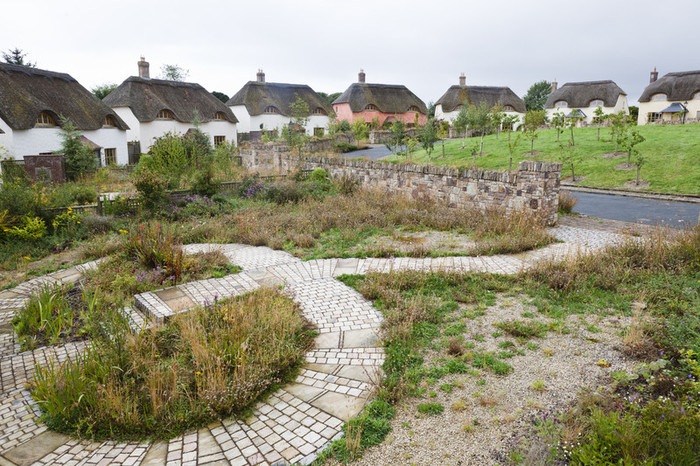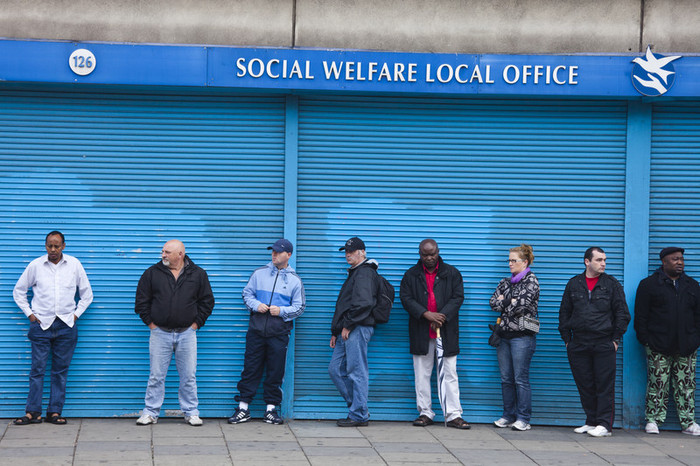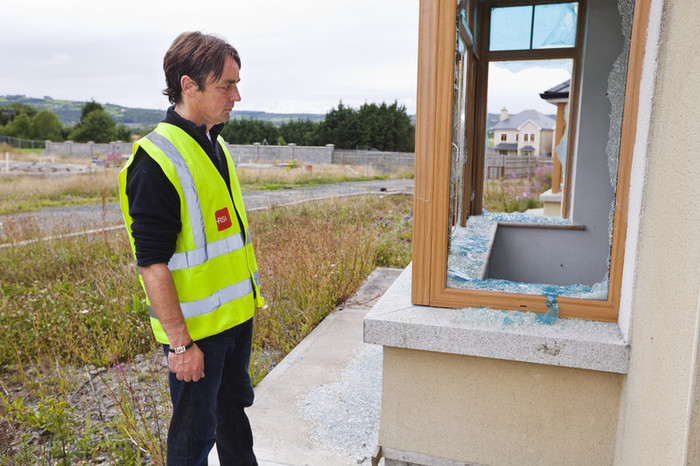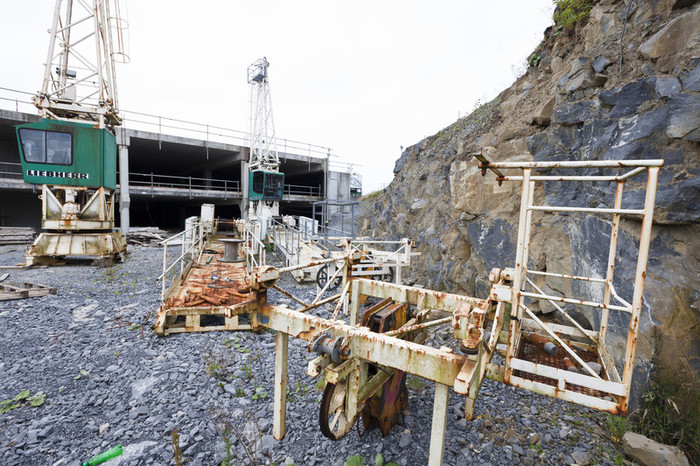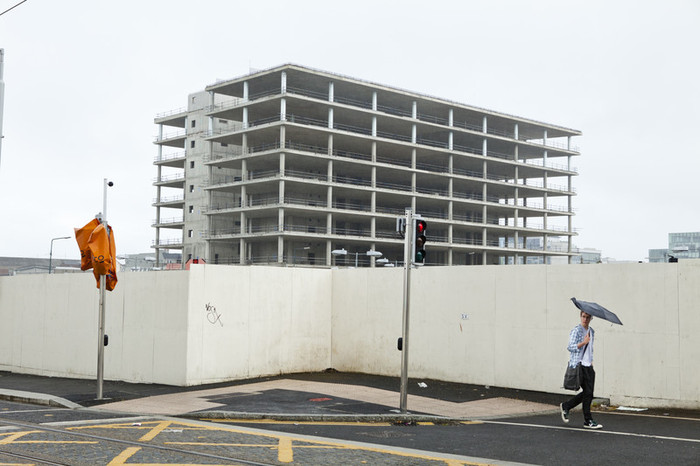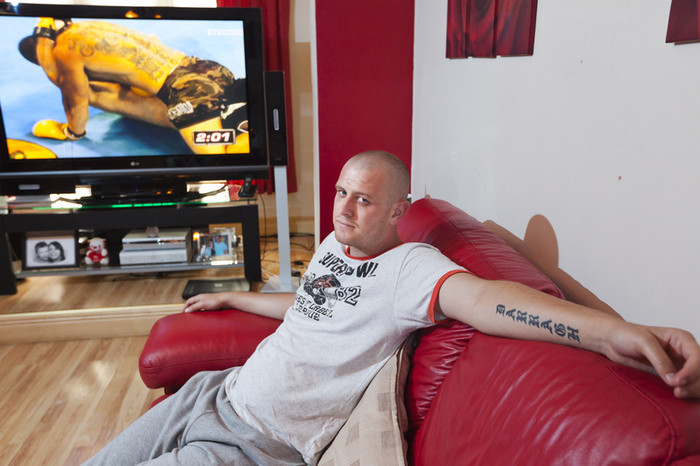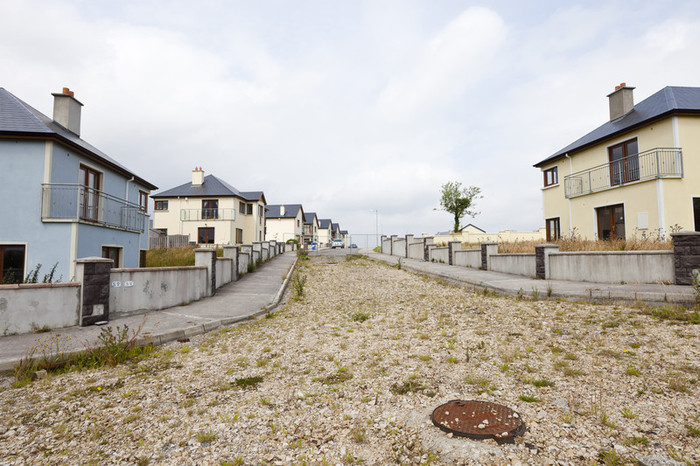Boom To Bust In Ireland
© Lauren GreenfieldThe Death of the Celtic Tiger and the Rise of the Ghost Estates
Photographer Lauren Greenfield recently photographed the Ghost Estates and other devastating physical evidence and human stories, in her coverage of Ireland’s dramatic financial implosion that is part of her long-term documentation of global consumerism and the cycle of boom and bust around the world.
Like the Norman castles of time past, whose ruins continue to dot the Irish countryside, the modern ghost estates are littered throughout the country, empty modern reminders of the irrational exuberance and naïve financial indiscretions that have befallen this smart, ambitious young nation.
The Irish are now paying the price for getting rich by buying Ireland from each other. As “The Big Short” writer, Michael Lewis, astutely observed, because of Ireland’s “sad history of dispossession,” owning a home was as important to the Irish as a mark of freedom. “In their rush to freedom, the Irish built their own prisons,” he wrote. The remaining Ghost Estates and the $2+ trillion of debt are the shackles they are condemned to live with for generations to come.
Wealth has been an elusive mistress for Ireland since the beginning of its existence. For most of its history, Ireland was an agricultural nation, and its main export was young laborers. But in the 1990s, something changed. Ireland joined the Euro currency, foreign corporations began investing heavily, taking advantage of an excessively low corporate tax rate, and the construction industry soared as companies demanded office space, and their work force required housing. For the first time, Ireland became a land of immigrants rather than emigrants. Unemployment fell from 18% to 3.5%, and average wages grew at one of the highest rates in Europe.
This period of roaring economics success was coined the "Celtic Tiger." Ireland's banks and inhabitants rode the wave of cheap and accessible credit from Europe. People, who once worked farms and inherited homes in their families for generations, were suddenly taking out mortgages on modern second houses, and holiday homes. The Irish were on top of the world, with one of the highest per household earnings in the world, and a country that The Economist identified as the best “quality of life” in the world in 2005. Discarding their long history of poverty, they became one of the richest countries of the world. Little did anyone realize that by the end of the booming decade, they would be one of the most indebted per household nations in the world.
The roaring Celtic Tiger collapsed in 2008 amidst global financial crisis. Soon after the Lehman Brothers collapse, foreign creditors called in their loans, and the banks, along with all who they loaned money to - including real estate developers, builders, and individual mortgage holders - were exposed for having outdone themselves. Ireland is 85 Billion Euro in debt to the IMF and ECB, and Ireland, once considered one of the safest investments, recently saw its credit rating reduced to "junk status". The nation's unemployment rate has consistently hovered around 14% since 2009.
The remnants of the economic collapse are visible everywhere. Ireland's green fields are now full of half-empty housing estates. For many of the estates, like those photographed across the country in Galway, Leitrim and Laois, construction was stopped midway through the process. Rhoda Brogan, who invested in her dream home on what is now a "ghost estate" in Borris in Ossory, Co. Laois, is one of the many Irish homeowners whose view from her kitchen window is far from idyllic. Open sewage leaks out of unfinished pipes. Dangerous building materials lie scattered between houses and the foundations of unfinished homes, and abandoned homes in estates like these are also targets for thieves.
As though frozen in time, large scale commercial developments look like archeological excavation sites - massive holes with rusting cranes. A rural development site, once purchased for 6 million Euros to build homes, is now back to being a cow pasture and will sell for the agricultural value of 250,000 Euros.
As fortunes have been lost, the personal cost has been tremendous. Male suicide and depression is endemic. A successful Irish developer who bought the island of Ireland in Dubai for 20 million dollars committed suicide when he saw his wealth evaporate overnight. Trevor Gillespie (seen above), a well-bred equestrian who used the money from his father’s family business to build promising housing estates in the country, now finds himself 20 million Euros in debt and is struggling to keep the family farmhouse that was their pride and joy. Parents who thought their children had a future in Ireland and are now seeing their children emigrate to Australia, England and the US, re-living the familial loss of generations past.
When the construction industry bottomed out, thousands of carpenters, plumbers, electricians, painters and construction laborers went from receiving top dollar for their work, to waiting in the social welfare handout line. To cope with the high rates of depression and suicide among men, social organizations like the Men's Shed in Arklow, Wicklow, have formed to help men cope with financial stress. Members of the Arklo Men's Shed build friendships and opportunities to communicate about their feelings while working together on construction projects and community programs related to men's health issues.
Of course, the Irish can be counted on to use their entrepreneurial spirit and find a silver lining in any dark situation. Since the collapse, Irish people have been forced to reevaluate their national definition of wealth. They say Ireland lost itself during the boom, and now, friends and neighbors have time again for a cup of tea and a friendly chat. Making lemonade out of lemons, a group of unemployed college graduates and musicians pool their social welfare benefits and help a homeowner make his payments by moving into a “recession mansion” where they throw parties, make music, and re-learn the lesson of which their forefathers sang: "that riches are not needed for wealth."
N.B - Lauren Greenfield also produced video interviews of many of the subjects in this story, including a real estate developer now 20 million Euro in debt, one of Ireland's most successful real estate agents who's business has been devastated, to a group of young college graduates/musicians who occupy a mansion while getting by "on the dole".
Click to view the complete set in the archive
